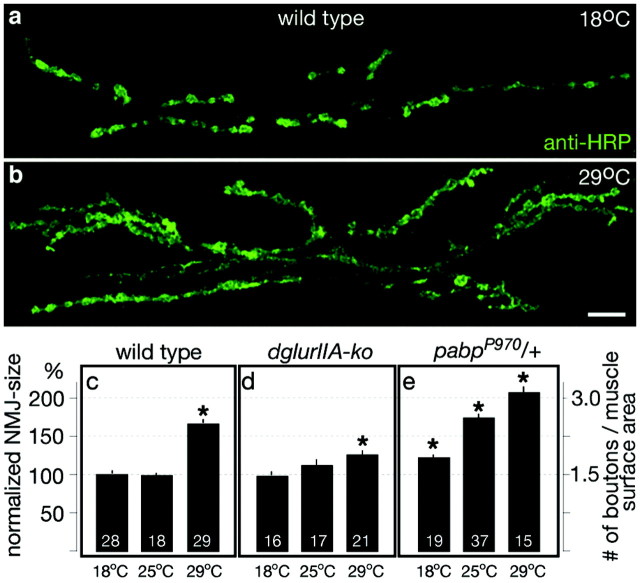Figure 1.
Increased outgrowth of NMJs at 29°C rearing temperature. a,b, Confocal images of anti-HRP-labeled NMJs (muscle 6/7, abdominal segment 2) of wild-type larvae reared at 18°C (a) or 29°C (b). Scale bar, 20 μm. c-e, Quantification of NMJ size on muscle 6/7 of abdominal segment 2 (see Materials and Methods) in wild-type larvae (c), dglur-IIA-ko animals (dglurIIAAD9/df(2L)clh4) (d), and pabpP970/+ larvae (e) that have been reared at the indicated temperatures. Larvae reared at 29°C developed significantly larger NMJs than animals raised at 25 or 18°C (*p < 0.001). This effect was particularly prominent in pabpP970/+ larvae but significantly suppressed in dglur-IIA-ko animals (p << 0.001). Note that pabpP970/+ larvae showed a strong increase in bouton outgrowth at 25°C, whereas NMJs of wild-type and dglur-IIA-ko animals developed simple NMJs at this rearing temperature. Data represent means ± SEM.

